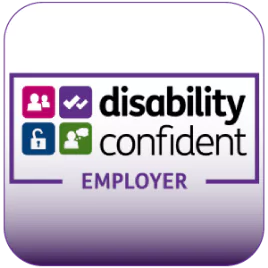The last two years have presented significant challenges for employees, leaders and organisations alike. First came the economic, social, cultural and political issues arising from the pandemic, followed by the ‘Great Resignation’, where job-to-job moves reached a record high in 2021.
With extensive skills shortages across a wide range of sectors and employees increasingly prepared to leave unfulfilling roles, employers must take action if they want to attract and retain the best talent.
Step forward, internal mobility.
Internal mobility should be straightforward as in theory it’s the process of supporting and facilitating career development and role changes to retain skills and enhance individual careers. It’s a highly effective workforce strategy and is the most common response to recruitment difficulties (e.g. the CIPD and Omni Talent Planning Survey 2021 showed that 57% of organisations upskill existing employees to fill hard to fill roles). It also helps employers remain agile during periods of change while, at the same time, capitalising on skills already in the organisation to fill critical positions. Furthermore, internal mobility helps employers cut the costs associated with attrition and reduces the stress placed on the wider workforce.
So, while internal mobility is an increasingly effective tool that enables organisations to develop, engage and retain talent, it can be challenging to get right and requires a shift in workplace culture. Here, we look at some of the key challenges associated with internal mobility and some of the methods employers use to overcome them.
1. Structure
Many organisations still employ traditional hierarchical models, where each role is carefully documented and positioned through a system of boxes and lines. With restrictive career paths already mapped out, employees have little scope for exploration and can feel boxed in. Such rigidity also fails to benefit the organisation as there could be valuable transferable skills sitting in a particular department that could be applied in other areas where flexibility and speed are needed.
Changing the structure of an organisation requires a rethink and board-level buy-in to overhaul and blend departments in a way that grants employees freedom of movement in the workplace. Only then will employers gain greater clarity on where skills lie in the organisation and the specific areas that interest people. It may seem impossible, but it’s not and steps towards a more agile organisation can be simpler than first thought. Many organisations have successfully “unstructured” to become fitter, flatter, and faster, unlocking massive value. As an example, this blog highlights what these organisations have done right and what we learn from them.
2. Focus
With talent acquisition often focused on external candidates, organisations can neglect to share opportunities with employees. There can be an apprehension that moving skills from one area to another will lead back to square one, with a new position to recruit for. However, fluid structures enable roles to be adapted with little to no disruption.
Employers excelling in this area ensure all positions are visible to those inside and outside the organisation. Implementing technology platforms where employees have profiles that detail their skills and match them to available opportunities as and when they arise can be particularly effective. More progressive organisations actively target passive employees just like they would passive external prospective candidates, as part of their wider talent management programmes.
3. Culture
As touched upon in the previous point, there can be a reluctance to move people within an organisation, with departments keen to hold onto highly skilled employees. To overcome the notion of ‘talent stealing’, which could impact morale and cause divisions, employers must build internal mobility into the organisation’s fabric.
Some prominent employers have taken this to the next level and created rules around internal mobility. For example, Cisco offers job swaps, time swaps (where employees can swap 20% of their job with someone) and the opportunity to work on projects across the organisation. Furthermore, employees who have worked in a role for two or more years are free to look for another internal position, with line managers required to actively help them do this.
As with structure, adapting a pre-existing culture requires leadership buy-in from the outset and a programme in place to educate line managers on the importance and benefits of internal mobility.
How RPO enables internal mobility.
To execute internal mobility effectively in a way that will benefit the organisation and its people, many employers rely on RPO solutions to help manage the cultural transition and strategy.
The role of an RPO is to improve resourcing effectiveness, with internal mobility a crucial element of this. Omni embeds its team into organisations and our people become an extension of an internal TA function, helping to develop strategies that reshape the culture and implement processes that nurture skills and enable positive talent transitions.









